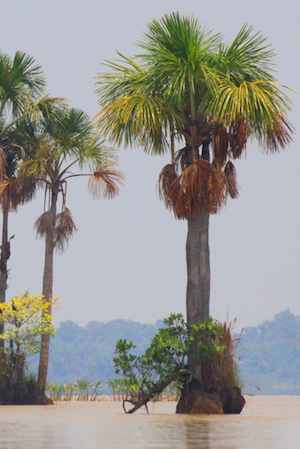 The Bolivian government recently created the largest protected wetland in the world – an area bigger than the Netherlands and Belgium combined, more than 17 million acres (6.9m hectares).
The Bolivian government recently created the largest protected wetland in the world – an area bigger than the Netherlands and Belgium combined, more than 17 million acres (6.9m hectares).
The Llanos De Moxos wetland is prized for its rich natural diversity, as the home to 131 species of mammals, 568 types of birds, and 625 fish species. Several species – including the giant otter and the Bolivian river dolphin – have been identified as vulnerable, endangered or at critical risk of extinction.
The Llanos de Moxos, located near the borders of Bolivia, Peru and Brazil, consists of tropical savannas with cyclical droughts and floods. Its proximity to three major rivers makes the wetlands especially important for flood control, and maintaining a minimum flow in the rivers during dry seasons.
The area is also prized for its cultural value. The region was inhabited by pre-Columbian cultures from 800 B.C. to 1200 A.D. These together formed the “Moxos water-based cultures” typified by the clever use of hydraulic infrastructure for water management of the vast territory covered by the llanos, or plains, which sustained intensive agricultural production on which these ancient peoples survived.
The declaration by Bolivia was made at the annual Ramsar Convention in February.
The (Ramsar) Convention on Wetlands of International Importance is an intergovernmental treaty, signed by 160 countries in 1971 in the Iranian city of Ramsar. The Convention’s mission is the conservation and wise use of wetlands, with the goal of achieving sustainable development.
(READ more from the World Wildlife Fund)



















